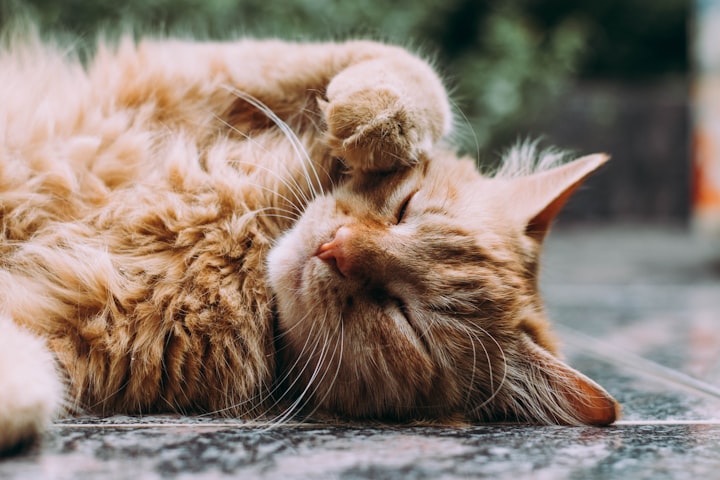Why Understanding Cat Body Language is Important
Understanding Cat Body Language

Cats have long been admired for their grace, independence, and mysterious nature. These enigmatic creatures often communicate through subtle body language cues, and deciphering their signals can lead to a deeper understanding of their needs, emotions, and overall well-being.
Whether you're a seasoned cat owner or new to feline companionship, understanding cat body language is crucial in building a solid bond and ensuring a harmonious relationship with your furry friend.
Cats, unlike dogs, are known for their more nuanced and complex communication style. While they do vocalize, cats primarily rely on body language to express themselves. By paying attention to their posture, facial expressions, tail movements, and ear positions, we can decipher their moods, intentions, and desires. This ability to interpret their nonverbal cues is essential in preventing misunderstandings and avoiding potential conflicts.
So, how can we understand cat body language effectively? Here are some key indicators to look out for:
Tail Position: A cat's tail can reveal a great deal about its emotions. A relaxed, gently swaying tail typically indicates contentment and relaxation. Conversely, a puffed-up tail is a clear sign of agitation or fear. Pay attention to the position and movement of the tail to gauge your cat's emotional state accurately.
Ear Position: The position of a cat's ears can convey a wide range of emotions. When their ears are forward-facing, it generally suggests curiosity or engagement. Flattened ears against the head often indicate fear or aggression. Understanding these signals can help you determine whether your cat is receptive to interaction or needs some space.
Pupil Size: Similar to humans, a cat's pupil size can indicate its level of arousal and interest. Dilated pupils typically suggest excitement, fear, or anticipation. Conversely, constricted pupils may indicate contentment or concentration. Observing their eye movements can give you valuable insights into their emotional state.
Body Posture: The way a cat positions its body is a significant indicator of its mood. An arched back and piloerection (raised fur) often signal aggression or fear. On the other hand, a relaxed, loose posture suggests comfort and trust. Pay attention to their overall body language to gauge their level of comfort in different situations.
By being mindful of these cues and observing your cat's body language, you can better respond to their needs and create an environment that promotes their well-being.
Here are a few practical tips to help you understand and respond to your cat's body language:
Spend Quality Time: Building a strong bond with your cat requires dedicated time and attention. Spend regular quality time engaging in activities that they enjoy, such as interactive play sessions or grooming. This will help you establish trust and familiarize yourself with their unique body language cues.
Learn Their Preferences: Cats have individual preferences when it comes to physical contact and personal space. Observe how your cat responds to different forms of interaction and adjust your approach accordingly. Some cats may enjoy being petted, while others may prefer gentle chin scratches or simply being in your presence.
Avoid Forcing Interactions: Cats appreciate their independence and need space to recharge. Respect their boundaries and avoid forcing interactions when they exhibit signs of discomfort or withdrawal. Creating a safe and stress-free environment is essential for fostering a positive relationship.
Seek Professional Advice: If you're unsure about your cat's behavior or have concerns about their well-being, don't hesitate to consult a veterinarian or a professional animal behaviorist. They can provide valuable guidance and help you address any underlying issues effectively.
FAQs:
Q: Why is it important to understand cat body language?
A: Understanding cat body language helps us interpret their needs, emotions, and potential conflicts. It allows for better communication and helps create a harmonious and fulfilling relationship between humans and cats. By understanding their body language, we can respond appropriately to their cues, provide the right level of interaction, and create an environment that supports their well-being.
Q: Can cats' body language vary among individuals?
A: Yes, just like humans, cats have unique personalities and preferences. While certain body language cues are generally consistent, individual cats may exhibit slight variations in their expressions and behaviors. It's important to spend time getting to know your specific cat and familiarize yourself with its specific body language signals.
Q: Can understanding cat body language prevent aggression or conflicts?
A: Yes, understanding cat body language can help prevent aggression and conflicts. By recognizing the signs of fear, stress, or discomfort, we can avoid situations that might trigger aggressive behavior. Additionally, knowing when to give cats space and respecting their boundaries can help reduce the likelihood of confrontations.
Q: Are there any universal body language cues in cats?
A: While some body language cues can be considered universal in cats, it's important to remember that individual differences exist. However, certain behaviors like an arched back, hissing, or flattened ears are generally associated with aggression or fear across different cat breeds and individuals. It's crucial to consider the context and overall body language to accurately interpret a cat's emotions.
Q: Can cats' body language change over time?
A: Yes, a cat's body language can change based on its experiences, environment, and overall emotional state. For example, a cat that was once fearful or anxious may become more confident and exhibit different body language cues as they feel more secure in its surroundings. Regular observation and attention to your cat's behavior will help you notice any shifts in their body language.
About the Creator
Ayesha Mughal
I have extensive experience writing for the web, focusing on creating high-quality content that is both informative and engaging. My writing style is adaptable, allowing me to write on various topics in various formats.





Comments
Ayesha Mughal is not accepting comments at the moment
Want to show your support? Send them a one-off tip.